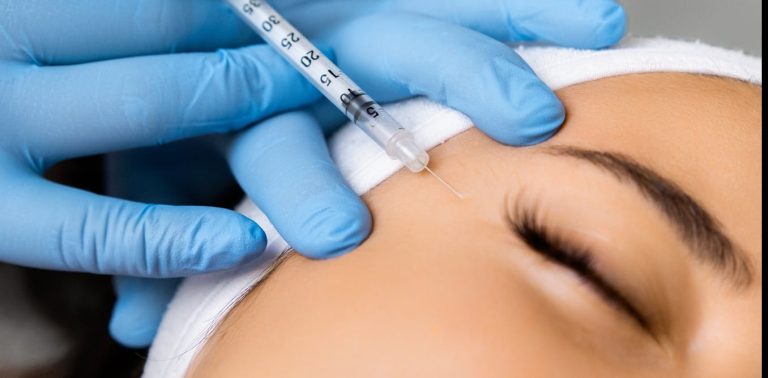Botulinum toxin, or Botox as it is popularly known, is famous for its ability to smooth wrinkles. But hiding our lines from the world isn’t why the first scientists started experimenting with this substance.
Botulinum toxin is produced by the bacterium Clostridium botulinum. In its rawest form, it can cause the deadly botulism disease. But in the form in which it is used in the cosmetic and medical product industries, it is so diluted and processed that it is not a danger.
Botox was first used medically in the 1970s by an American ophthalmologist named Alan Scott to help patients with a condition called strabismus (more commonly known as strabismus). The doctor noticed that when it was injected around the eye, it not only helped treat strabismus – it also reduced wrinkles and lines.
Given the public’s fascination with looking younger, there has been enormous interest in this discovery. However, it has not been approved for cosmetic use by drug regulators until 2002 in the USA and since then in many other countries.
This is the way most commonly used today – they almost existed 9 million injections given to reduce wrinkles worldwide in 2023. However, it is still widely used for various medical purposes. Here are some amazing ones:
1. Eye disorders
People who have an eye disorder can benefit from Botox injections. The most common eye disorders treated in this way are: strabismus and blepharospasm (closing the eyelids).
When someone has strabismus, the muscles that control eye movement are out of sync – meaning each eye looks in a different direction. Botox injections help relax these muscles, which corrects the misalignment.
Blepharospasm sufferers, on the other hand, experience an involuntary contraction of the muscles around their eyes – leading to twitching of the eyelids or increased blinking. Botox injections given around the eye relax the muscles involved in blinking, reducing twitching and discomfort.
The positive effects of Botox in the treatment of blepharospasm seem to last between 12 and 14 weeks. For strabismus, the benefits may last up to six months.
2. Excessive sweating
While sweating is an essential temperature-regulating body function, excessive sweating can be embarrassing and uncomfortable. This condition, known as hyperhidrosis, can be caused by any number of factors – including diabetes, thyroid disorders or menopause.
Regular antiperspirants have little effect on reducing this excessive sweating, so some sufferers turn to Botox injections. These work from nerve-numbing which stimulate sweating, subsequently reducing the amount of sweat produced. Users need repeat injections every four months to a year to see continued benefits.
Alan Mazzocco/Shutterstock
3. Migraines
Some migraine sufferers experience such debilitating symptoms that they are unable to do their daily activities. Botox injections can help prevent migraines in regular sufferers (at least eight a month) and for whom other treatments do not work. Botox blocks the brain’s pain signals, which dulls or prevents these attacks.
People who have used Botox in this way do not just report that they have experienced it around them half the number of migraines, but also report experiencing less pain during an attack. Injections are usually needed every 12 weeks.
4. Overactive bladder
A overactive bladder creates the need to urinate much more often than normal. This can be extremely distressing and can have a big impact on a person’s quality of life. While pelvic floor exercises and some medications can help, they don’t always work for everyone.
Botox injections are an alternative. One of the causes of an overactive bladder is the bladder muscles stretching more than they should. Botox relaxes these musclesmaking the sufferers urge to urinate less often. These results can last from six months to a year – after which repeat injections are needed.
5. Syndrome without belching
While not being able to burp may not seem like an obvious problem, it can be annoying for those who experience it. Burping is the body’s way of clearing digestive gas. Failure to clear these gases can lead to bloating and discomfort.
People who can’t burp have a rare condition known as retrograde cricopharyngeal dysfunction or “no burp syndrome.” With this condition, the throat muscles that allow us to release digestive gases are unable to relaxpreventing the body from releasing these air bubbles. This can lead to increased flatulence, bloating, nausea and even painful hiccups.
Botox is now used to help people with this condition. Injections in the neck relax the muscles which prevent them from belching. This allows gases to pass through unhindered.
6. Depression
Botox could potentially even be used to treat long-term depression in people who have not responded to other treatments.
Numerous studies have shown that depressed patients who received Botox injections experienced an improvement in their mood. Although the reason for this is not entirely clear, some scientists believe it could be related to how our facial muscles and facial expressions to make us feel. Because Botox numbs these muscles, it is believed to send certain signals to our brain which improve our mood.
Therefore, Botox has proven to be more than just a wrinkle-smoothing miracle. Not only does it help sufferers of a variety of medical conditions lead more normal lives, but it is also being investigated for treatment various other medical issues. These include pain, chronic itching and even managing the side effects of cancer treatment.

